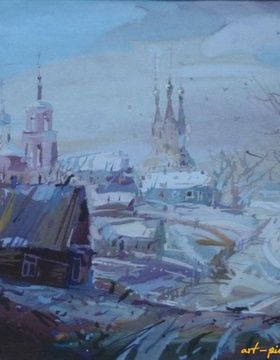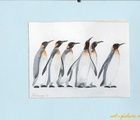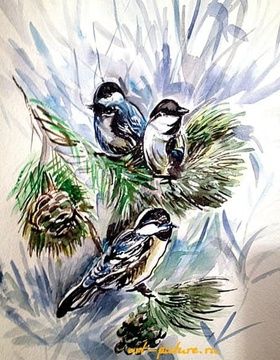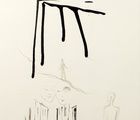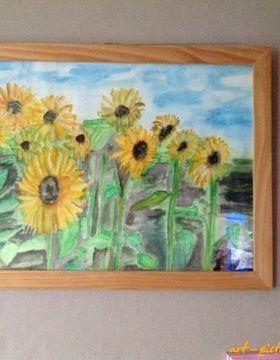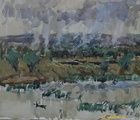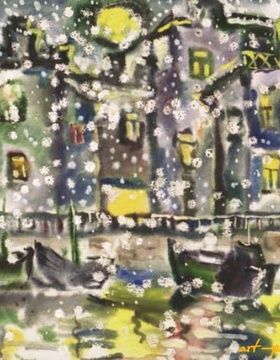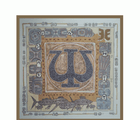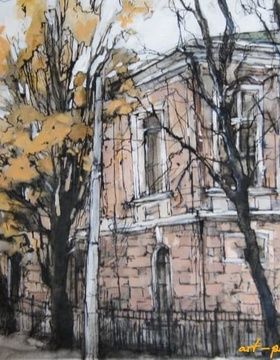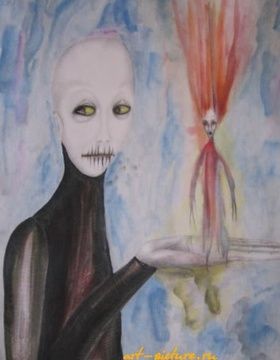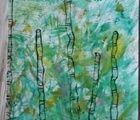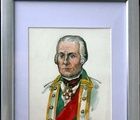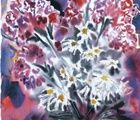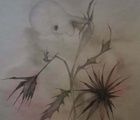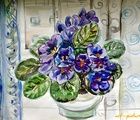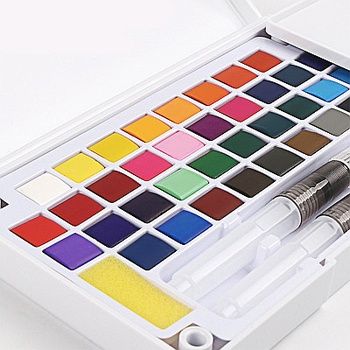
Акварель — термин, в котором отображена суть данной техники. Для рисования художники используют не масляные краски, а специальные, акварельные, которые перед нанесением разбавляются водой. Кроме того, иногда дополнительно смачивается и лист. Отсюда и название — от латинского слова aqua («вода»).
На этой основе в итальянском и французском языках появились термины acquarello и aquarelle.
Акварель позволила художникам выразительно передавать эффекты воздушности и влажности. Долгое время живописцы бились над проблемой отображения на произведениях дождя, и эту задачу с успехом решили именно акварелисты. Эта техника идеально подошла для пейзажистов, работающих на пленэре.
Акварель — самая капризная и непредсказуемая техника, с красками которой трудно работать, они плохо хранятся. Но художники, освоившие ее, создают произведения с непередаваемыми нюансами оттенков и полутонов. Основа слова пришла из латыни: корень «aqua» — означает «вода». Название краски во французском языке звучит как «aquarelle» в переводе «водянистый», «водная краска».
Этот вид искусства с многовековой историей длительное время не был широко распространён, в Средневековье техника использовалась в основном для создания эскизов. В начале XVIII века художники Великобритании начинают активно работать с акварелью, разрабатывают базовые принципы техники. Этот период называют «золотым веком» развития стиля.
У пигментов акварельной краски очень тонкий помол. Это нужно для того, чтобы краска была более прозрачной при нанесении. Также у акварели очень широкий выбор цветов, что безусловно, очень удобно для такой техники, как лессировка. Для любительских красок, например, детских, в составе акварели связующее вещество – это мед. В профессиональных же красках связующее вещество, это, как правило, гуммиарабик – твердая, прозрачная смола из высохшего сока акаций. Такой компонент в составе позволяет обильно разбавлять краску водой, без видимой потери цвета. А еще это не позволяет акварели скатываться в капли.
Наносят ее на картон или бумагу кисточками из беличьей шерсти. Существует две техники работы с акварелью: по сухому или влажному листу ватмана. Работать по сухому картону или бумаге может даже маленький ребенок, который впервые взял в руки кисть. Простым карандашом наносят изображение. Обычно на этом этапе работы используют такие виды рисунка, как эскиз и набросок. Сначала окрашивают светлые участки, потом темные. Это делается для того, чтобы цвета не смешались. Ошибки исправляют, проводя по бумаге, смоченной в воде губкой или кистью.
Акварель — это техника изображения, сочетающая свойства живописи (богатая палитра красок и оттенков) и графики (отсутствие рельефности, наложение мазка тонким слоем).
История акварельной живописи
Направление искусства получило более позднее распространение, чем живопись и графика. Предшественником акварели можно считать технику фрески, художники средневековья применяли стиль для создания эскизов и набросков.
Основоположником живописи акварелью в эпоху Ренессанса принято считать немецкого художника Альбрехта Дюрера, в этом стиле работали Энтони ван Дейк, Джованни Кастильоне. Примеры работ единичны, техника не была распространена.
Классика акварели доведена до совершенства в Англии на рубеже XVIII-XIX веков, этому послужили новаторские идеи Томаса Гёртина и Джозефа Тернера. Популярность акварельной техники усугублялась возникшей модой на портретные миниатюры.
Вклад в развитие искусства внесли известный акварелист Сэмуэл Палмер, префаэлит Люси Мэдекс Браун, постимпрессионист Поль Сезан. В 1804 году было образовано общество акварелистов. В середине XIX века техника становится популярна в США и Франции.
Какие бывают акварельные техники
Акварель объединяет множество интересных техник. Искусствоведы классифицируют их по различным принципам, в частности — по влажности листа и кисти, по многослойности наложения цвета. Объединив эти подходы, получим следующую развёрнутую классификацию видов акварели:
Работа на сухой бумаге («по сухому») — обеспечивает контроль над краской. Эту разновидность акварели также называют итальянской. У неё есть два подвида.
Однослойная.
Этот художественный подход разделяется на:
Работу «сухим по сухому» (то есть изображение наносится отжатой кистью). Получаются очень чёткие мазки, и произведение максимально приближается к графике. Работу «мокрым по сухому». Влажной кистью мастер наносит мазки рядом друг с другом, слегка захватывая границы. Оттенки смешиваются, получаются выразительные переливы.
Многослойная (лессировка). Художник-аварелист накладывает прозрачные мазки поверх предыдущих — уже высохших, чтобы не допустить смешения. Это сближает акварельную лессировку с масляной живописью и позволяет создавать очень реалистичные произведения. Цвет получается интенсивным, полнозвучным, но сохраняется ощущение лёгкости.
Работа на влажном листе («по мокрому», «по сырому»).
Это так называемая английская акварель. Контроль за краской вызывает трудности, но зато художник получает прозрачные оттенки с нежными и мягкими переходами тонов.
Выделяется два варианта:
«Мокрым по мокрому» — обеспечивает сильный эффект размытости.
«Сухим по мокрому» — позволяет лучше управлять краской.
Иногда выделяется метод A la Prima — подразумевается, что работа выполняется в один присест, без дальнейших доработок, пока не высох материал. Произведения «а ля прима» выглядят свежо и эмоционально. Их нельзя скопировать, так как невозможно абсолютно точно повторить размытие.
Возможна также комбинация английской и итальянской методики в одной работе. Смешанная техника позволяет получать различные эффекты: например, детальную прорисовку реальности при размытости дальнего плана.
Интересные эффекты даёт рисунок на частично увлажнённом листе. Например, делая длинный мазок, акварелист получает разную прорисовку на сухих и мокрых фрагментах.
Во всех четырёх основных вариантах (итальянском, английском, комбинированном, с фрагментарным увлажнением) можно работать как отжатой кистью, так и мокрой. Кроме того, иногда используют полусухую (полувлажную) кисть. Бумага не является единственным материалом для акварелистов. Они также работают с шёлком, пергаментом, картоном, слоновой костью и другими материалами, но довольно редко.
